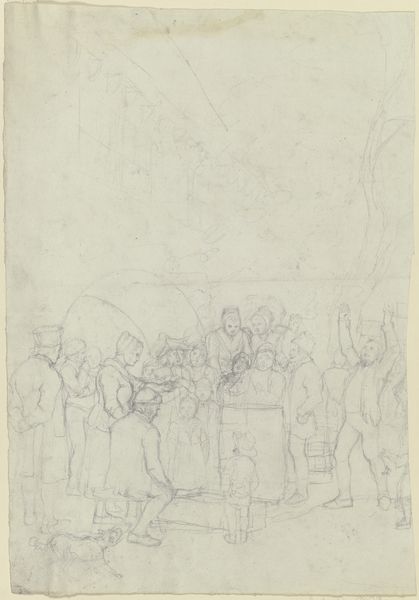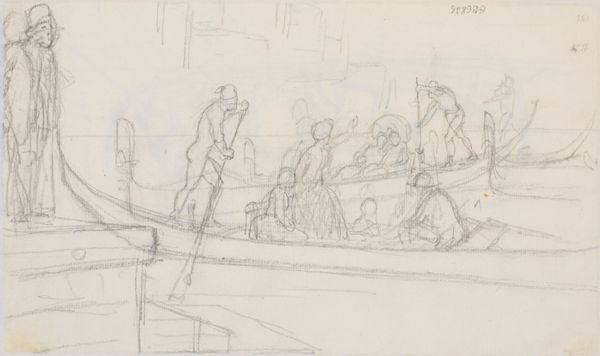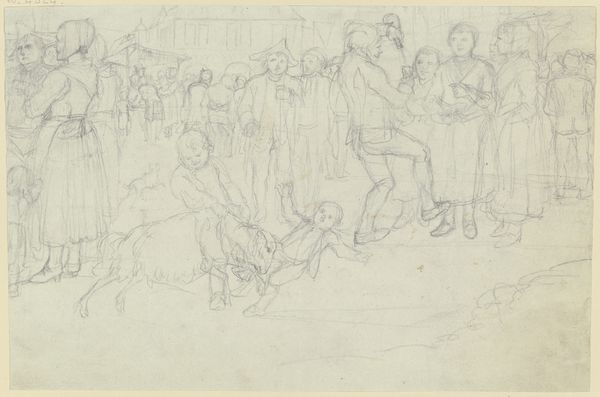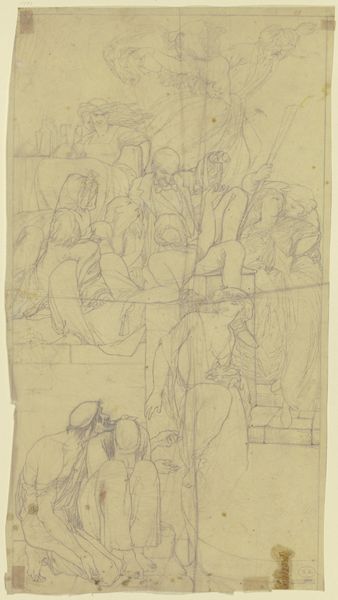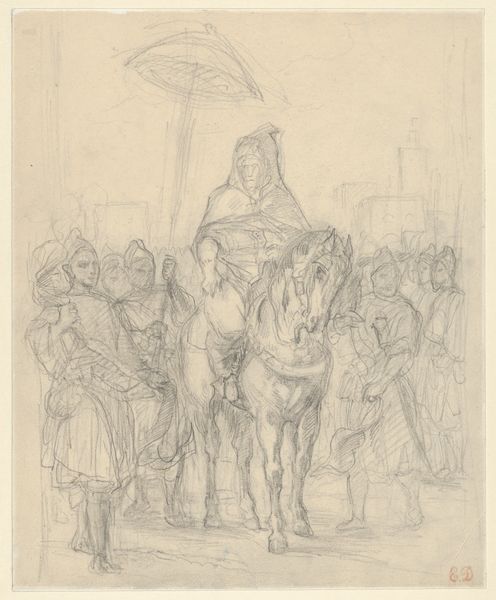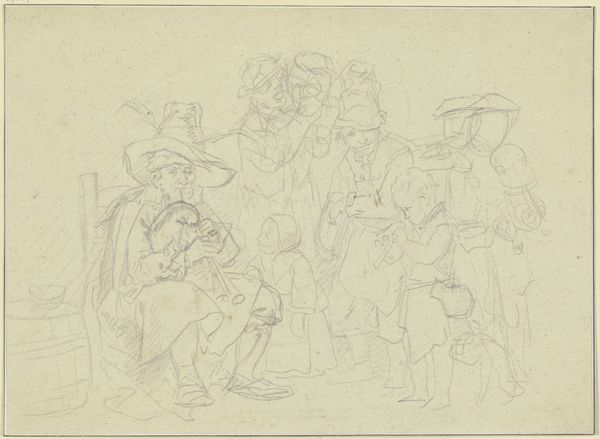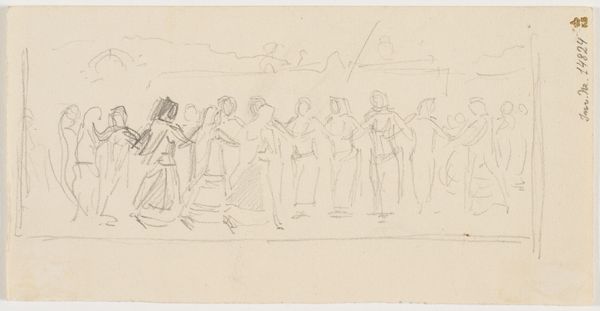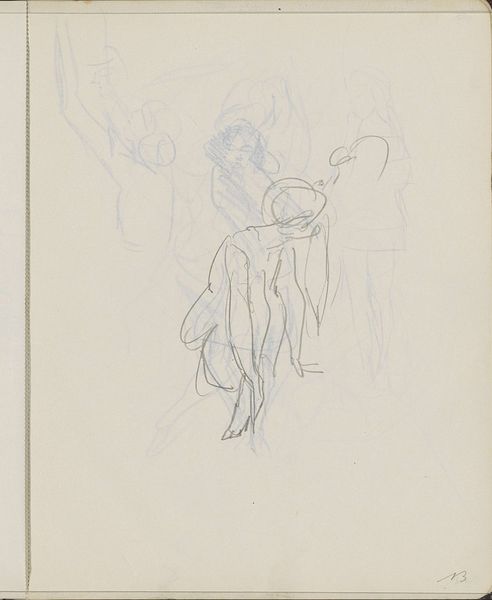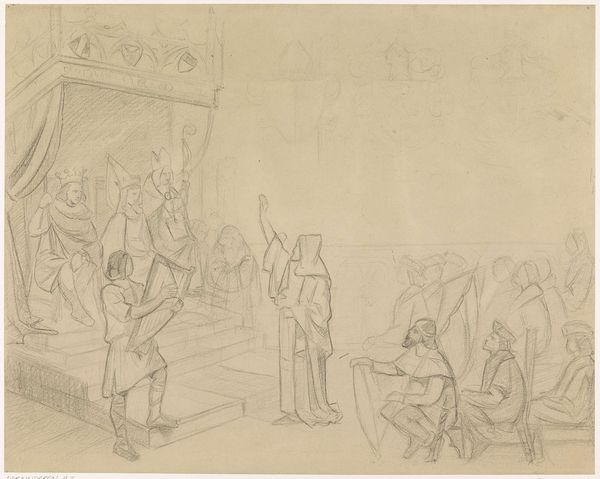
drawing, pencil
#
drawing
#
16_19th-century
#
narrative-art
#
landscape
#
figuration
#
german
#
romanticism
#
pencil
#
genre-painting
Copyright: Public Domain
Curator: Welcome. Today we’re examining "Hahnenschlag in der Umgebung von Frankfurt," a pencil drawing currently held here at the Städel Museum, attributed to the German artist Anton Radl. Editor: Hmm, a hazy memory brought to life, almost. The lines are so delicate, like breath on a window. And the subject matter…a village gathering? Makes me think of folk tales and midsummer festivals. Curator: Precisely! It does capture a sense of community. It most likely represents the cultural practices of 19th century Germany, focusing on narrative and genre scenes which often celebrated common life. See the fiddler, elevated to play? The implied movement of dance? This drawing shows communal bonding rituals through art. Editor: And a rooster on a pole! What's that all about? Looks like the most important character, poised and crowing over everything. Gives the scene a slightly surreal edge. Curator: The rooster likely represents more than meets the eye, a folk symbol, deeply woven into German traditions, perhaps denoting bravery or local pride. Editor: Maybe it's just a weathervane dreaming of being a king for a day. There's something charming about its imperfection, like finding a half-forgotten photograph. This feels so wonderfully *un*finished, like it holds a secret just out of reach. Curator: An accurate insight. As art moved into more public spaces in the 19th Century, artworks began echoing themes of identity and romanticism, creating feelings and moods that captured a shared social conscious in times of vast industrial growth and cultural change. This work fits snugly in this framework. Editor: True enough. All art is never quite as objective as some like to believe it is. Still, sometimes a drawing is simply a whisper of a feeling, an echo of a dance long past. What a beautiful capture. Curator: Indeed. Its delicate nature allows one to peer directly into another time and to learn from it. Thank you.
Comments
No comments
Be the first to comment and join the conversation on the ultimate creative platform.

